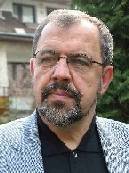 |
University of Warsaw University of Warsaw, Faculty of Management 1/3 Szturmowa Street, 02-678 Warszawa, Poland Tel. (+48) 22 552 00 00 (See direct address of the Faculty of Management below.) |
History.
The history of Poland's number one university is one of partition, occupation, bloody rebellions, closures, destruction, intermittent periods of limited freedom and growth, and the eventual rise to it's
present renown based on the unbreakable will and deep dedication of its professors and students to succeed and excell.
Following the partition of Poland in 1795, the oldest and most influential Polish academic center, Jagiellonian University in Kraków, became part of Habsburg Austria, leaving Poland without
a university. In 1816, Tsar Alexander I permitted the Polish authorites to create a university with five departments: Law and Administration, Medicine, Philosophy, Theology, and Arts and Humanities.
Following the 1830 uprising the univesity was closed and replaced with a Russian-language "Imperial University of Warsaw" providing education for the Russian military garrison of Warsaw.
During World War I (1914-1918) Warsaw was seized by Germany. The military authorities permitted several Polish social and educational societies to be recreated including the Warsaw University.
The Polish language was reintroduced, and the professors were allowed to return to work, but the number of lecturers was kept low (usually not more than 50); there were no limits on the number
of students. Until 1918 their number rose from a mere 1,000 to over 4,500. After Poland regained its independence in 1918, the University of Warsaw began to grow very quickly and by the late 1920s
the level of education in Warsaw had reached that of western Europe. By the beginning of the 1930s the University of Warsaw had become the largest university in Poland, with over 250 lecturers and
10,000 students. During World War II (1939-1946), the German occupation authorities closed all the institutions of higher education in Poland and the main campus of the University of Warsaw was turned
into military barracks. However, many professors organized the so-called "Secret University of Warsaw" (Tajny Uniwersytet Warszawski). The lectures were held in small groups in private apartments
and the attendants were constantly risking discovery and death. During the 1944 uprising 63 professors were killed and the University lost 60% of its buildings. After World War II, many professors
who had survived the war returned, and began organizing the university from scratch. In December 1945, lectures resumed for almost 4,000 students in the ruins of the campus, and the buildings were
gradually rebuilt. Until the late 1940s the university remained relatively independent, then communist authorities started to impose political controls, and the period of Stalinisation began.
Many professors were arrested by the secret police, books were censored and ideological criteria in employment of new lecturers and admission of students were introduced. On the other hand,
education in Poland became free of charge and the number of young people to receive the state scholarships reached 60% of all the students. After Gomulka's rise to power in 1956, a brief period of
liberalization ensued, though communist ideology still played a major role in most faculties (especially in such faculties as history, law, economics and political science). International cooperation
was resumed and the level of education rose.
The University of Warsaw is housed in over 100 buildings within three campuses in different parts of Warsaw: the main Campus (central Warsaw), Ochota Campus and S?uz.ew Campus. The main campus of the
in Warsaw's city center comprises several historic palaces, most of which had been nationalized in the 19th century. There is also the New Library (Nowy BUW), an impressive new building with spectacular
roof gardens as well as several smaller campuses elsewhere in the city, most notably so called Ochota Campus at Banacha Street (ulica Banacha) where a number of science departments are located.
The University collaborates with ca 1,000 foreign institutions, including 420 partnerships within the boundaries of more than 1,100 Erasmus agreements and 240 partners from 52 countries within the
boundaries of university agreements on direct collaboration.
|
University of Warsaw Established: 1816 Type: Public Endowment: $132 million USD Academic staff: 3,250 Administrative staff: 3,050 Students: 53,500 Doctoral students: 2,200 Website (English): www.edu.pl/en/ |

|
|
Faculty of Management Website in Polish International Business Program English  Prof. Jan Turyna, PhD [picture] Dean, Faculty of Management Live on YouTube Address: 1/3 Szturmowa Street 02-678 Warszawa, Poland Tel./Fax: +(48)(22) 55 34 183 Organization of the Faculty of Management, right: Free translation from Polish by Google Translate, edited. |
Organizational structure of the Faculty of Management (in Polish) Department of Finance and Accounting Economic Analysis and Planning Faculty of Management. Accounting and Auditing Workshop Faculty of Management Accountant. Laboratory of Financial Management Enterprise Management Divisione. Department of National Economy Laboratory of EU Funds and Programmes of the Faculty of Management Assistance. Public Management; Market Management; International Economic Relations. Department of Marketing Department of Marketing. Department of Legal Problems of Administration and Management Administrative and Legal Issues in Management; Civil and Legal Issues in Management. Finance and Legal Issues in Management; Rights - General Administration. Social and Legal Problems of Employment. Department of Psychology and Sociology of Management Psychology; Sociology. Financial Systems Department of the Economy Banking and Financial Markets; Insurance and Capital Markets. Department of Management Information Systems Infrastructure; Information Systems. Department of Management Systems Management Systems. Department of Organization Theory Organizational Innovation and Entrepreneurship; Theory and Methods of Organization. Independent study Language Laboratory; Operations Research; European Economic Law; Market Innovation and Logistics. Quality Management; Mathematical and Statistical Methods of Management; Strategic Management and International Management. |
|
AASBI Accreditation Review Criteria - see Overview GAEP 1 Degree awarding: Yes. 2 Universal Declaration of Human Rights Issues Amnesty Int'l 2013 report 3 Human Rights reflected: Yes.. 4 Equal opportunity: Yes. 5 Infrastructure accessible: Yes. 6 Continued existence: Yes since 1945. 7 Autonomy: Yes. 8 Physical facilities: Yes. 9 Curriculum: Focused. 10 Professional Certification Program: Pending. 11 Student admission: Yes. 12 Teaching effectiveness: Yes. |
13 Faculty qualification: Yes. 14 Faculty teaching load. Yes. 15 Faculty time for leisure: Yes. 16 Faculty development: Yes. 17 Full time and adjunct faculty: No distinction. 18 Faculty association: Pending. 19 Code of conduct: Yes. 20 Reputation or standing: Yes. 21 Financial stability: Yes. State university. 22 Withdrawal: N.A. 23 Expulsion: N.A. 24 Legal remedy: N.A. 25 Steering committee appointment: Pending. 26 Reimbursements: N.A. |